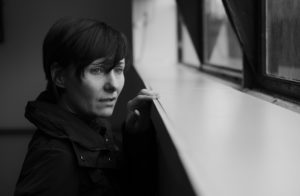Dealing with the death of a loved one is never easy. World-renowned singer Celine Dion can attest to that, as she lost both her husband Rene Angelil and brother Daniel last year. She has recently claimed that she still talks to and sometimes hears her husband Rene. Occasionally referred to as “post-bereavement hallucinatory experiences,” these kinds of internal phenomena are actually very common.

Celine Dion claims to still hear and talk to her deceased husband
Credit: livingloving.com
According to one study released in 2015, between 30 and 60 percent of widowed participants experienced these post-bereavement hallucinations. Another report from 2013 noted that upwards of 50 to 80 percent of bereaved people may experience the presence of a loved one who has died at least once.
The “presence” of a dead loved one can manifest itself in numerous ways. The bereaved may hear their loved one’s voice or sounds that may trick them into thinking their loved one is nearby. Experiences of touch and smell are also common forms of these “hallucinations.”
A study published in 1971 found that a significant proportion of elderly widows and widowers in Wales experienced sensing their loved one. Thirteen percent had heard their loved one’s voice, 14 percent had seen them and three percent felt their touch. Thirty-nine percent said they felt the continuing presence of their partner, and 12 percent continued to talk to their loved one.
What to call these kinds of experiences is a subject of debate. Some studies refer to them as post-bereavement hallucinatory experiences (as mentioned above) and that seems to be the most common. Others call them “experiences of continued presence.”
Part Of The Bereavement Process
Sensing the continued presence of a loved one is often part of the bereavement process. It’s not that those who experience the presence of the loved one who died are going crazy. Post-bereavement hallucinations may just be one way that our brain deals with these troubling events.
One explanation for these hallucinations could be that perception begins with what our brain thinks is “out there” — what we predict we will experience. This prediction is subsequently changed based on what we see or hear, i.e. the brain corrects itself. Therefore if the person who died was a regular part of the bereaved person’s life, the brain may just be predicting that the person will be there even when they are not.
 As far as the healing process is concerned, experiences of continued presence have largely been seen as positive. A study from 1993 concluded: “Post-bereavement hallucinations or illusions were very frequent and considered helpful. Half of the subjects felt the presence of the deceased…about one third reported seeing, hearing and talking to the deceased.”
As far as the healing process is concerned, experiences of continued presence have largely been seen as positive. A study from 1993 concluded: “Post-bereavement hallucinations or illusions were very frequent and considered helpful. Half of the subjects felt the presence of the deceased…about one third reported seeing, hearing and talking to the deceased.”
These hallucinations can provide spiritual and emotional strength and mitigate the bereaved person’s feelings of loneliness and isolation. One man even claimed to have heard his grandmother’s voice when he was trying to locate a problem with a waste disposal unit in her house. (His grandfather was still alive but was too distressed to work around the house.) And so he heard her voice say, “It’s in the back, it’s in the back,” and he was able to locate the issue.
Since there are countless ways we can deal with the death of a loved one, none should be thought of as silly, foolish or “crazy.” All of the studies that look at these post-bereavement hallucinations note that none of the participants had previous instances of mental instability. So sensing the presence of and talking or listening to a loved one who has died during times of grief should not be considered abnormal. If it helps with the grieving process, there’s nothing wrong with that.
Did you enjoy this article? If so, check out these recent posts from SevenPonds:
How Can Jewish Funeral Traditions Help Families Cope with Grief?
Our Monthly Tip: Cognitive Behavioral Therapy for Grief

 Post-Bereavement Hallucinations May Help With Grief
Post-Bereavement Hallucinations May Help With Grief


 “Hand to Earth” by Andy Goldsworthy
“Hand to Earth” by Andy Goldsworthy

 Caring for a Dying Loved One? Be Gentle With Yourself.
Caring for a Dying Loved One? Be Gentle With Yourself.














